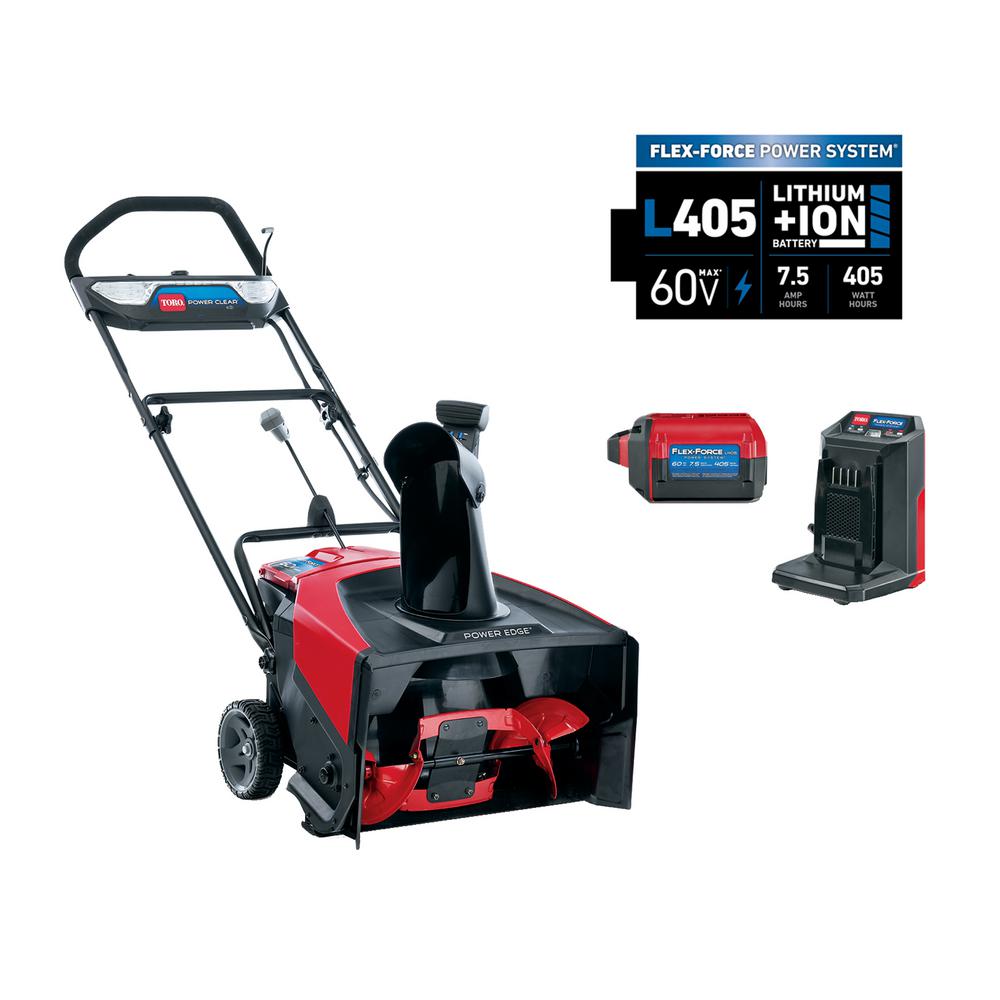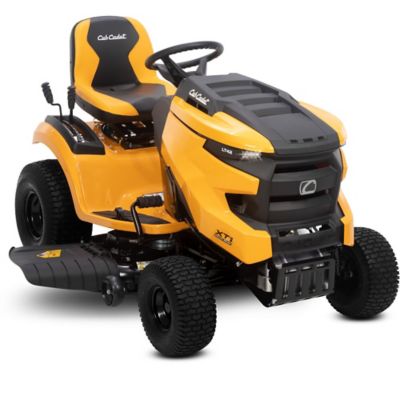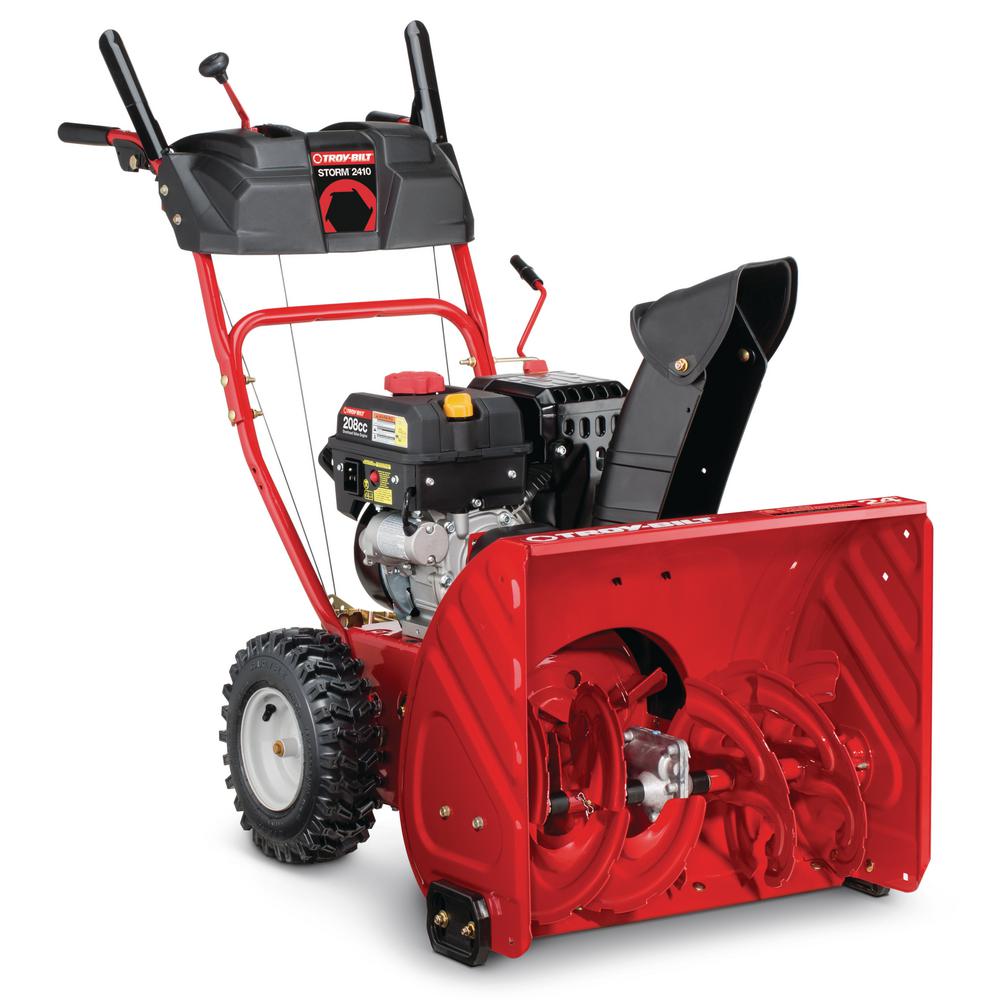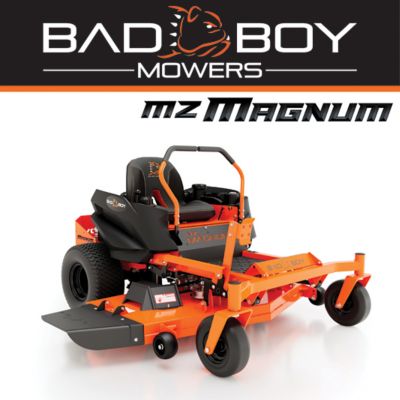Toro Power Clear 21 in. 60-Volt Lithium-Ion Brushless Cordless Electric Snow Blower with 7.5 Ah Battery/Charger Included
Do the job better, faster, easier. Legendary Toro performance, now battery powered. Rip through tough snow with the all-steel Power Edge auger.
With the Toro 21 in. Power Clear 60V Max (7.5 ah) Battery Snow Blower, you can clear a large area lightning-fast. Not only will it keep even the deepest snow flowing and throw it farther, it’s also ready whenever you are, as it starts the first time, every time. The blower is ideal for concrete and asphalt surfaces and can clear up to a 12-parked-car driveway on a full charge, with 2 – 9 in. of snow at a time. You’ll get the most out of your battery life with ECO Mode. Plus, enjoy performance year-round with more products in the Flex-Force battery line, from blowers and string trimmers to mowers and more. And you can rest easy knowing that Toro stands behind this product with a full warranty, not just limited coverage. Count on it.
-
Snowdrift strength; all the power to break through heavy, wet snow and throw it up to 40 ft.
- Crush snow to the curb; rip through tough snow with the durable design of Toro’s patent-pending all-steel Power Edge auger.
- Power To Get The Job Done. Clear up to a 12-parked-car driveway on a single charge with the included L405 battery (60-Volt MAX, 7.5 Amp-Hour, 405 Watt-Hour) and charger; and you’ll get the most of your battery life with ECO mode
- Extended life; enjoy more power, longer runtime and longer life from a Brushless DC Motor
- Quick-turn chute with glove ready grip; aim exactly where you want to throw snow, from behind the machine, with the quick-turn chute lever and comfort glove grip
- Put snow where you want it; with a touch of the hand, the locking deflector lets you aim exactly where you want to throw snow from the chute
- Right fit for you; ideal for clearing a driveway that can hold up to 12 cars on a single, full charge in 2 – 9 in. of snow at a time
- Starts the first time, every time. reliable starting and low maintenance with battery power; Flex-Force 60V batteries have intelligent software to maximize run time and power
- Night vision; have a brighter and broader view with the panoramic LED lighting
- We’ve got you covered; Toro stands behind this product with a full warranty, not just limited coverage; 2-year full warranty on snow blower and 3-year full warranty on battery
- All-season power; more products in the flex-force battery line, from mowers to string trimmers to leaf blowers
- enjoy performance year-round with more products in the Flex-Force battery line; expand your tools to make less work and save money on your next purchase of a bare tool
- Tested and trusted; choose with confidence, knowing millions of people worldwide count on Toro snow blowers
- Based on average Traqline unit share for snow blower market from 2013 – March 2020
- Battery manufacturer rating = 60V maximum & 54V typical usage; actual voltage varies with load
Additional information
| Assembled Depth x Height x Width (in.) | 53 x 42 x 21 |
|---|---|
| Auger Diameter (in.) | 7 |
| Clearing Width (In.) | 21 |
| Ideal Snow Depth (In.) | 10 |
| Intake Height (in.) | 12 |
| Tire Height (in.) | 7 |
| Tire Width (in.) | 2 |
| Certifications and Listings | No Certifications or Listings |
| Manufacturer Warranty | 2-Year Tool, 3-Year Battery warranty |





by Michael
I bought this on New Year’s Eve, having reviewed all electric battery powered snow blowers and Toro came out on top, needed it for the ice and snow storm that arrived on New Year’s Day in the Kansas City area. Easy to assemble, did the job of clearing the driveway and sidewalks at our corner lot, even with a layer of ice at the bottom with 3″-4″ of sticky snow, all in one charge.
by Dee
I actually have not used it. I charged the battery, ran it into some crusty ice crap, and decided to wait for actual snow to test it out. We never got enough to warrant using it. You’re welcome.
by James
Excellent snow blower! I was dubious of getting a battery powered blower, having just moved to Muskoka, but at the same time I didn’t want all the hassle of gas, oil, maintenance, etc. This works like a dream! Great on fresh snow, deep as well – we had 2′ of snow and it handled it like a champ, with just under half the battery left. And I have a big drive! Wet snow it wasn’t quite as strong, but still handled it with ease, although the battery was down to one light. Still, for the amount of snow, and wetness of it, that’s impressive. I’m so impressed with this, I’m probably going to buy summer products in this range – mower, trimmer, blower – as well as a spare battery, since the same battery can be used across the whole range. Highly recommended!
by Christian
I purchases this because I am sick and tired of small engines — their starting, maintenance, and consumables. However, I don’t really want to try to snow blow with cords. I did a lot of research and this seems to be generally agree to be the best cordless snow blower on the market. I is very light and maneuverable, especially compared to my old 2-stage gas blower. It is so simple to operate. It starts up simple and it is easy to switch the direction of chute. I guess it could be a bit out of reach if you are on the shorter side. I have only had one opportunity to use this since I got it. It was about 4-5 inches of snow — fairly wet. It got through this great. It did go down to concrete with the scraper. Not even close to a clog. You want to play with the up/down angle on the chute. Higher will give you potentially more distance, but a greater chance of getting caught in the wind and being sent back to slap you in the face. I have a three car wide driveway and about 2+ cards deep. I live on a corner lot with sidewalks on all sides. I got through this snow and had about 1 bar left on the 7.5 AH battery. I am a little worried that I could run out in a bigger accumulation. However, I could do it is phases. Also, since I am now bought-in to the toro 60v line, I may pickup the string trimmer or blower and give them a shot. If I buy, at least, one of of those with the battery, I will get a little bit extra for winter. One other tip: I do like to spray down the auger and chute with silicone spray to help reduce the chance of clogs. In the picture below, the snow has melted of quite a bit because we had some rain the following day.
by Kathy
Purchased just before MN’s Thanksgiving snowstorm, this battery-powered snowblower exceeded our expectations, slowly but surely working through 16″+ of heavy snow (not the ideal conditions it was intended for!). In the following week with 2 lighter rounds of several inches of snow each, it made short work of cleaning things up. Couldn’t be happier and highly recommend! Just recharge the battery after use so it’s ready for the next round. We were able to clear the sidewalks on our corner lot plus the apron of our driveway off the shared alley on one charge.
by Corey
The product exceeded my expectations. With light snow I was able to plow through 10″ of snow with much speed. Still need to test it with heavy snow, but was not expecting to being able to fill the entire front of snow and not slow down. I’ve done 200 ft of sidewalk in just 5 minutes (a pass there and back). This is great!
by John
I had a single stage, not national brand, snow blower years ago, and this one has much superior components. The other was had a gas motor, and that together with cheap meant it didn’t start when it was cold outside, despite its ‘electric starter.’ This one is able to put that concern aside owing to improved battery technology, allowing a cord free powerful electric motor.. The battery is heavy, as expected, and its charger has an ordinary two pronged polarized plug on a seven foot cord. The charger is fitted with screw holes on the back so you can hang it on a wall near an outlet and the snow blower. It took just over three hours to fully charge, and it hummed as it charged but stopped when fully charged. There are lights on the charger indicating phase of charging, and indicators on the battery tell you its state of charge.